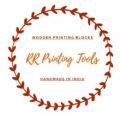Anokhi Museum
A trip to the Amber Fort is a popular destination when touring Jaipur, but visitors are increasingly adding what critics have called ‘A little gem of a museum’ called Anokhi Museum of Hand Block Printing to their list as well.
In the Fort’s shadow and a mere ten-minute walk through the cobbled streets of Amber, the historic capital of Rajasthan, lies the Anokhi Museum of Hand Block Printing. Located in a magnificently restored haveli or mansion, the museum displays a varied selection of block-printed textiles alongside images, tools, and related objects – all chosen to provide an in-depth look into the complexity of this ancient tradition.
Industrialization and rising consumer demand have severely affected a lot of traditional art forms and handicraft industries. Anokhi Museum of hand block printing in Rajasthan is trying to preserve such a dying handicraft and art form – hand block printing.
What Is Anokhi Museum of Hand Block Printing?
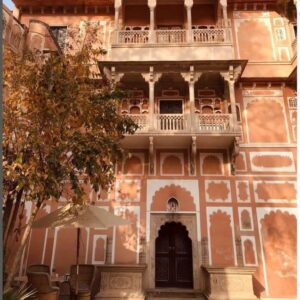
The Anokhi Museum of Hand Block Printing addresses this fragile situation primarily through education. Dedicated to the art of block printing, Anokhi Museum of Hand Block Printing strives to inform both textile specialists and general public alike; but more importantly, the artisans themselves are encouraged to visit and view their craft in a unique and inspirational way. Anokhi’s expansive Jaipur emporium is often the first shopping port of call for top international designers and sophisticated travelers from India and abroad thanks to their vast, high-quality range of well-priced dresses, kimonos, bedding, tablecloths and gifts.
Several years ago, they created a Museum of Hand Block Printing in a beautifully restored haveli near the base of the Amber Fort in Jaipur. It brings together a diversity of styles and techniques from around the country, not just for interested outsiders, but also to create a community where artisans can discover the greater context in which they work.
The two-story pink sandstone haveli in the dusty lanes of Amber is usually easy to miss. Many of the locals know this as Chanwar Palkiwalaon ki Haveli, and not Anokhi Museum of Hand Printing. The museum focuses on contemporary fabric, ranging from innovative designs created by talented artisans to traditional outfits still worn in select regions today, albeit in dwindling numbers. A focused selection of historic textiles provides a context for further understanding of block printing. The one-of-its-kind museum is an endeavour to preserve the community of artisans of 500-year-old block printing in Rajasthan. It was started by Anokhi, a clothing line selling block-printed garments in stores across in India. The company was the brainchild of a British woman who married an Indian and moved to Jaipur in 1970.
Anokhi Museum history
The creation of the Anokhi Museum of Hand Printing was the initiative of Founder & Director, Rachel Bracken Singh and her husband Pritam Singh. Pritam’s father, John Singh, purchased the dilapidated Chanwar Palkiwon ki Haveli mansion in the late 1970s and began a 3-year renovation project in 1989. With the guidance of architects, Nimish Patel & Parul Zaveri, the building was restored to its original grandeur.
By demonstrating the feasibility of using indigenous materials, time-honored construction methods, and skilled local craftsmen, the preservation project earned a UNESCO award for ‘Cultural Heritage Conservation’ in 2000. After completion, the future use of the haveli was still undetermined. Ultimately, Rachel and Pritam founded a museum dedicated to hand-block printing.
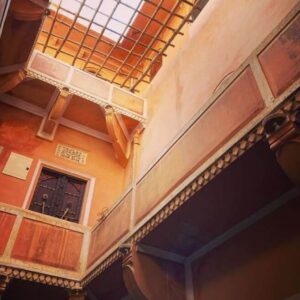
They employed Museum Consultant, Pramod Kumar (2003-2005) to implement the necessary structural adaptations and to research the Anokhi Archives. Together with Curator, Emma Ronald (2004-2007), Pramod organized the opening exhibition Print Progress ~ Innovation & Revival 1970-2005.
To illustrate the breadth of the craft, textiles in the permanent collection display a range of natural and chemical processes including ‘dabu-mud-resist printing’, and gold and silver embellishment. A display of wooden and brass blocks with carving tools highlights an aspect of the craft that is often neglected when discussing the beauty of the printed cloth.
Anokhi Exhibition
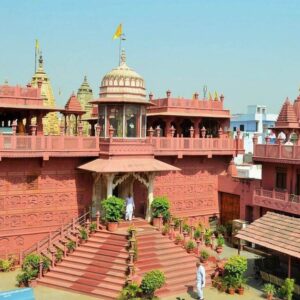
Sanganer: The Story of a Block Printing Town portrays the evolution of block printing in a textile market town. This historic survey details how printed fabric, once a local craft and now seen on catwalks internationally, struggles to compete in the modern world.
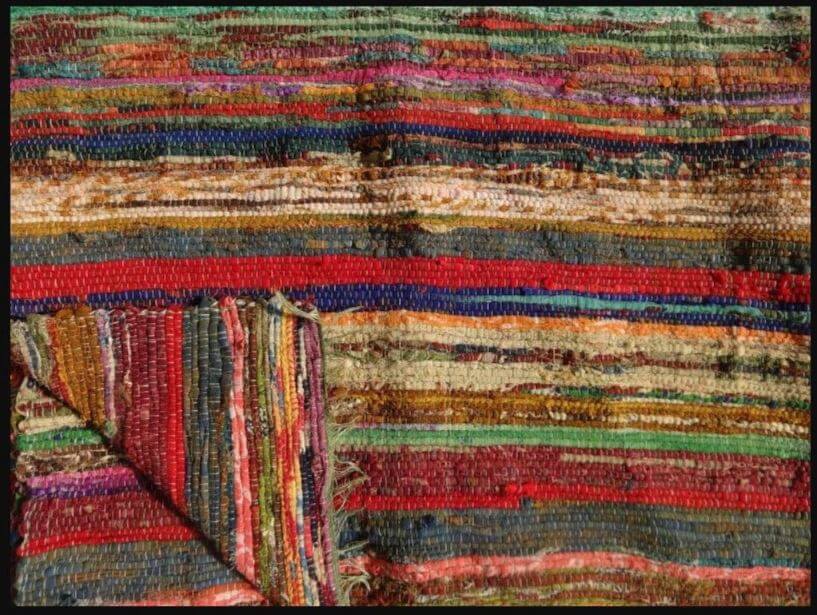
Focus on the Collection: Bichaunis ~Blankets are the hand-stitched icons of everyday life in India that add a dash of vibrancy to a simple family home. This exhibition of printed and stitched bedcovers from the Anokhi Archives demonstrates how a modern twist can revitalize traditional styles.
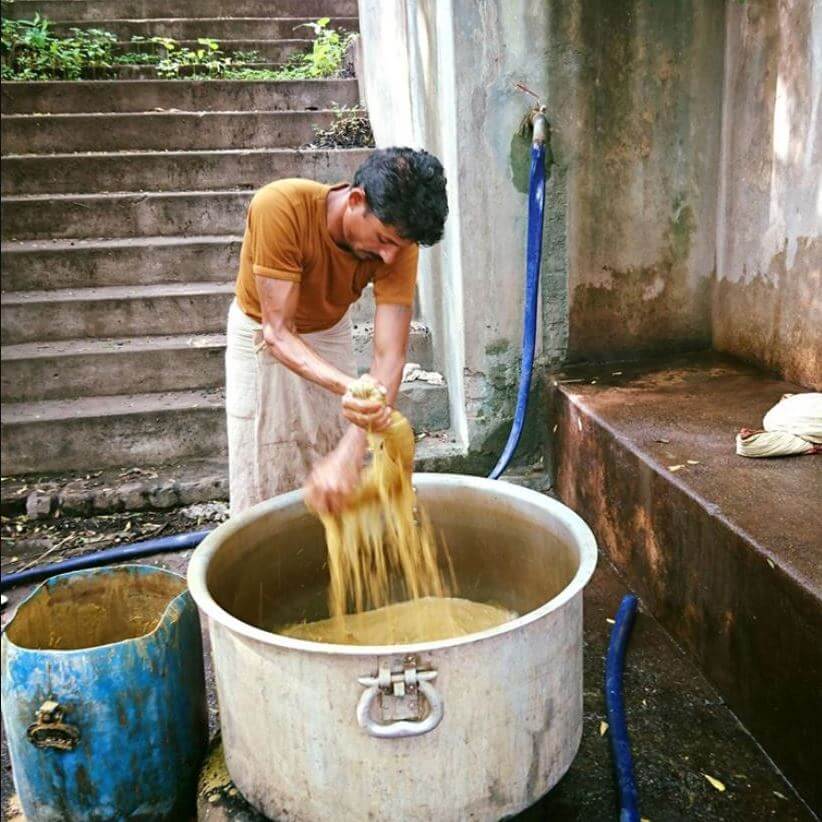
Bagh Printing: Bagh Printing comprises a selection of unique bedcovers from the small village of Bagh in Madhya Pradesh. Well suited to modern interpretations, this hard-to-find traditional cloth reveals an unusually bold, clear style of printing. A display of contemporary scarves by Womenweave compliments the exhibit and looks to the future.
Rebecca Layton: From a Modern Perspective showcases the printed textiles and woven dhurrie rugs of a young American artist. Using traditional methods, Layton has created fresh innovative patterns based on her ‘vision’ of India while living here on a Fulbright scholarship.
Galleries:
- Introduction
- Haveli Restoration
- Regional Textiles
- Natural and Chemical Dyes
- Block Printing & Carving Tools
- Gold & Silver Printing
Anokhi Museum of Hand Block Printing – Education
Since, (2007-present) Suki Skidmore has been working with Rachel to maintain an ongoing research program, resulting in an ongoing series of publications with related museum exhibitions. She also continues to refine museum practices, focusing on education and community development.
By maintaining an active acquisition program, the AMHP collection continues to grow with frequent additions of hand-printed textiles along with relevant objects and photographs. The extensive Anokhi Archives also provides a rich repository of clothing and home furnishings dating from the early 1960s to the present.
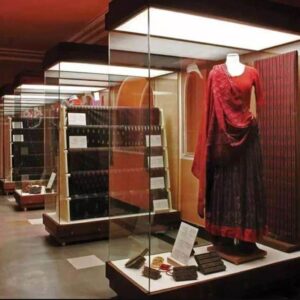
The museum focuses on contemporary fabric ranging from innovative designs created by talented artisans to traditional outfits still worn in select regions today, albeit in dwindling numbers. A focused selection of historic textiles provides a context for further understanding of block printing.
In a continuing effort to interpret hand block printing, AMHP offers a variety of programming for a diverse audience. Tours suit participants of all ages and skill levels ranging from local school groups to visiting tourists. AMHP also regularly features special events designed for our neighbors in Amber.
Tours for Adults & Children
AMHP welcomes school groups, colleges & adult visitors to take either a General Tour or Special Exhibition Tour. They offer supportive and innovative ways to view the collection including fun quizzes for all ages.
Anokhi Museum timings
A highlight of any visit is watching our daily block printing & block carving demonstrations. Here visitors have an opportunity to interact with the artisans and try their hand at the craft.
There will be no block carving or printing demonstrations between:
1:00 pm – 2:30 pm Fridays
1:30 pm – 2:00 pm on other days.
Like crafts worldwide, the block printing industry faces serious challenges trying to keep pace with modern manufacturing.
Hopefully, visitors from India and abroad will leave the museum a little wiser, and also more sensitive to the need of protecting this enduring heritage craft for future generations.
